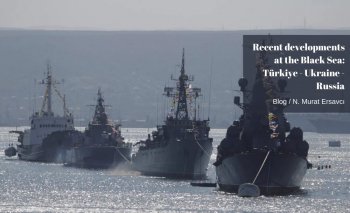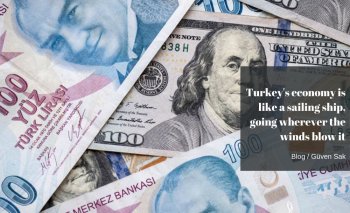Commentaries
Güven Sak, PhD - [Archive]
Let’s urbanize our agricultural policy already 06/11/2012 - Viewed 1820 times
Turkey’s agricultural policy framework concentrates on rural development rather than on the productivity of the sector. The majority of the voters, however, now live in urban areas.
Turkey successfully liberalized its economy in the 1980s, followed by a comprehensive structural transformation. It switched from an agricultural economy to an industrial one exporting medium-tech products. This is the general story that I tell when talking about Turkey. But I think there are some points missing. The true story is that, in the 1980s, Turkey liberalized its economy except for the agricultural sector. It appears that the agriculture and livestock sectors have remained as they were.
The design of agriculture and livestock sector policies are still seen as rural development programs. Is this a successful approach? I don’t believe so.
In the early 1960s, 70 percent of Turkey’s population lived in rural areas. Today, 75 percent of the population lives in urban areas. In the past, agricultural policies were designed to stabilize the income flow towards rural producers, which could be explained via democracy. Today, however, it is the urban consumer on whom policies should concentrate. Turkey has to urbanize its agricultural and livestock policies. This country, which terminated the era of domestic automobile brand Anadol in the automotive sector via an economic policy decision, now has to devise an urban- and consumer-oriented agricultural and livestock sector policy.
Have you recently checked Turkey’s productivity in meat production? Turkey has been performing badly in the world ranking of meat production per animal. Statistics for 2010 show that the average weight of a bovine carcass, that is the weight of meat with bones per slaughtered animal, was 217 kilograms in Turkey compared to 341 kilograms in the US, 317 in Germany, and 302 in France. The picture is similar for sheep carcass weight: Turkey is outperformed by developed countries.
Bovines are bred in order to produce meat. Developed countries are able to produce 50% more meat per bovine than Turkey. If meat production per bovine is low, then people have to consume more expensive meat. This is what the figures depict indeed. In Turkey, meat consumption is low already. Because meat is expensive. This is not new; it has always been expensive.
Dropping the issue about unproductiveness on the grounds that the breeds of the animals are different in Turkey means that Turkey will never be able to close the gap, so this unacceptable. Then, why are the livestock in Turkey dark and weak? If you ask me, the key reason is that as feed prices are high, Turkey cannot feed its livestock well. Turkey does not import feed either in order to help the agricultural production and feed industry flourish. Just like the case during the era of the import substitution policy. With businesses in the sector being small and unproductive, we end up with high meat prices.
I believe that the recent policy measures have been unable to address the essence of the matter. What is this essence? The current agricultural policy framework was designed in a period when population had a rural majority. It therefore concentrates on rural development rather than the productivity of the sector. The majority of the voters now live in urban areas, however.
Can Turkey revise its agricultural and livestock policy within an urbanized and consumer-oriented framework? Can it increase productivity and lower prices, overcoming the import substitution mentality in agricultural production? Let’s ponder on this.
This commentary was published in Radikal daily on 06.11.2012














